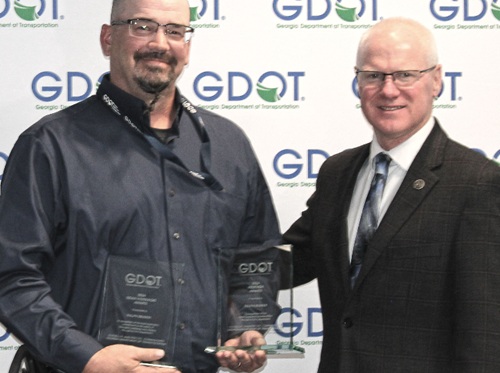The Kansas Department of Transportation said it recently completed the first year of the agency’s five-year-long Safety Corridor pilot program.
[Above photo by Kansas DOT]
The agency noted that this pilot program is a strategic initiative of the Drive To Zero or DTZ Coalition – an executive-level body representing state and federal agencies, advocacy organizations, the private sector, and the Kansas legislature – and, as such, groups within the DTZ Coalition will support the program with initial and long-term safety messaging to area communities and their organization’s customers.
The program aims to decrease fatalities and serious injuries along four state highway corridors by implementing a number of proven safety countermeasures, such as increased law enforcement, traffic safety education campaigns, low-cost engineering improvements, and a review of emergency response issues.
The safety corridors are on stretches of I-135, U.S. 83/50, U.S. 69, and U.S. 24 – each spanning 10 to 35 miles of highway – and are clearly marked with yellow “Safety Corridor/Increased Enforcement” signage.

Between October 2023 and June 2024, state and local law enforcement worked nearly 1,300 hours in the safety corridors, making 2,600 contacts with the traveling public, ranging from warnings to citations. The most common citation was speeding more than 10 mph over the posted speed limit, noted Vanessa Spartan, transportation safety bureau chief for Kansas DOT, in a statement.
“We know driver behavior improves when motorists expect and see law enforcement,” she said. “Law enforcement officers are dedicated to helping save lives on our highways and their efforts on the safety corridors are making an impact.”
Spartan added that enforcement, education messaging, and the deployment of proven engineering countermeasures will continue in those four highway corridors through 2028.
“The Kansas Highway Patrol and law enforcement statewide prioritize the safety of all motorists traveling throughout the state,” added Colonel Erik Smith, superintendent of the Kansas Highway Patrol.
“An increased presence on and near the four designated safety corridors deters dangerous driving behaviors that cause an increased risk for crashes. Ensuring that every motorist makes it to their destination safely will continue to be a focus of law enforcement partners across Kansas.”
Several state departments of transportation have also collaborated on the creation of similar safety corridors to reduce traffic fatalities and injuries along specific highway stretches.
For example, in January 2023, the Ohio Department of Transportation and the Ohio State Highway Patrol established a Distracted Driving Safety Corridor along a section of I-77 between state Route 18 and state Route 21 in northern Summit County – one of several corridors the Ohio DOT and OSHP have created over the last few years.
 States
States
Georgia DOT Foreman Receives Two Heroism Awards
January 2, 2026 States
States

